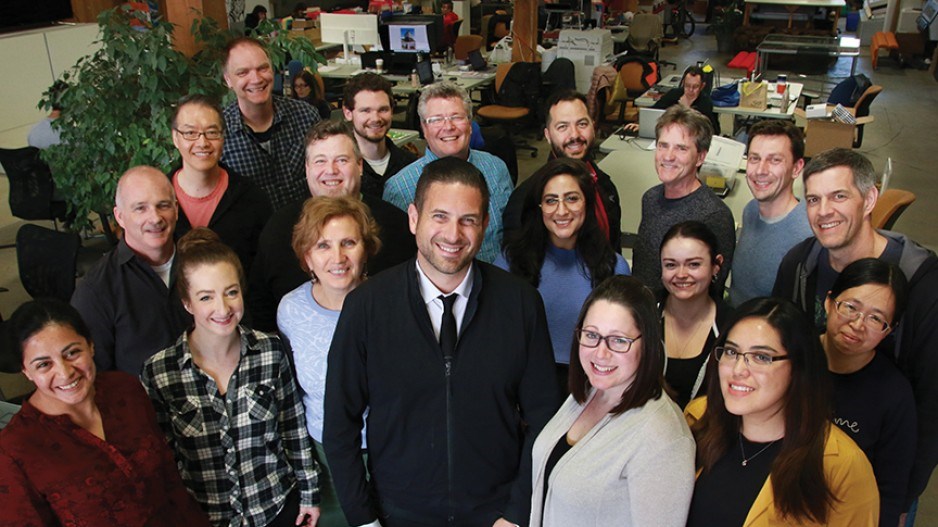Close to this time last year, the headquarters of Vancouver printing giant Metropolitan Fine Printers (MET) on the 1400 block of East Pender near Clark Drive was devastated by a fire that swallowed the entire business.
But the new year has brought better fortune for MET, which now has a smaller office at 1489 Frances Street, and has found a new facility in which to start anew just down the street.
“[The location] is a competitive advantage for us – most of the client base is based in the core of downtown,” said MET president Nikos Kallas. “We have had a challenging time trying to find industrial real estate,” Kallas said. “There is not a lot of supply and we didn’t really want to move out of the city because we are kind of Vancouver’s printer now as there aren’t many left.”
Both of the top two printers on Business in Vancouver’s Biggest Commercial Printers in Metro Vancouver list (page 20), Westkey Graphics Ltd. and Hemlock Printers, operate out of Burnaby. MET, the third-highest-earning printer on the list, was founded in 1977 and had an annual revenue of approximately $28 million in 2017-18.
The new MET location will be roughly 20,000 square feetand include new finishing equipment and machines.
The facility will host MET executives and sales and production teams, and house its main manufacturing plant.
The site, just off Clark and Hastings in east Vancouver, is under construction and is finalizing an address as the new facility will amalgamate two addresses. The company hopes to open the new facility in the fall of 2019.
The destruction of MET’s previous headquarters might seem to reflect the current state of the printing market as many companies in the Metro Vancouver area have dispersed, and those left have had to adapt to challenging client demands.
“I think overall the market has stabilized for our industry,” Kallas said. “There are a lot less printing companies on the market, and printing has also grown a little bit.
“In our industry, you have to be able to be quite fluid; you have to be able to adapt to new products all the time because marketers and corporations are always looking for new ways to showcase their products. You have to be very diversified in your offerings.”
The shift has been felt industry-wide.
“Entire organizations have entirely disappeared,” said Jeff Grayston, owner of East Van Graphics.
The effect is significantly more pronounced in Alberta, where the industry has been “decimated,” Grayston said.
“The industry has shrunk and some of the supply chains have disappeared because of that…. Runs have certainly gone down in quantity; festivals that used to do 100,000 are now doing 10,000 copies of a program.”
MET, East Van and other printing companies have expanded to host a variety of green and organic, compound-free options, yet many industry workers agree old-fashioned paperback books are making a comeback at printers.
“On the basis of self-publishing, self-publishing is very strong,” said Grayston. “We didn’t do bound, soft-back books five years ago, so that’s how big the market is; we went from zero to having dedicated people on bindery.”
Yet long-run prints are no longer the norm and printing jobs are being condensed and modelled in short, size-varying cuts with content that usually enhances on something already existing online.
“People want to see a lot more valid content that way. We have noticed a move to more engaged design, more tactile finishes like printing on uncoated papers, offsets – we probably tripled the amount of uncoated, offset paper we have used in the last few years,” said Scott Gray, vice-president of sales and marketing at Mitchell Press.
“[Printing jobs] tend to drive down into more niche silos,” Gray said. “They need to have a lot more valid content … but if it is educational and it informs, that is a different thing.”
Gray said he’s confident that there might be a shift from informational print, although that won’t mean the death of print newspapers. Rather, it will help give rise to more high-quality, long-form, research-based journalism, he said.




